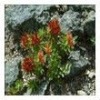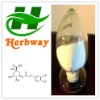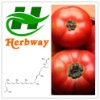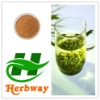- Contact Person : Mr. Lee Taylor
- Company Name : Changsha Herbway Biotech Co., Ltd.
- Tel : 86-0731-82668671
- Fax : 86-731-84285992
- Address : Hunan,Changsha,No.459,Wanjiali Road,Changsha China.
- Country/Region : China
- Zip : 410003
Supply best quality of professional wolfberry extract
The majority of commercially produced wolfberries come from the Ningxia Hui Autonomous Region of north-central China and the Xinjiang Uyghur Autonomous Region of western China, where they are grown on plantations. In Zhongning County, Ningxia, wolfberry plantations typically range between 40 and 400 hectares (100–1000 acres or 500–6000 mu) in area. As of 2005, over 10 million mu have been planted with wolfberries in Ningxia.[7]
Cultivated along the fertile aggradational floodplains of the Yellow River for more than 600 years, Ningxia wolfberries have earned a reputation throughout Asia for premium quality sometimes described commercially as "red diamonds".[8] Government releases of annual wolfberry production, premium fruit grades, and export are based on yields from Ningxia, the region recognized with
The largest annual harvest in China, accounting for 42% (13 million kilograms, 2001) of the nation's total yield of wolfberries, estimated at approximately 33 million kilograms (72 million pounds) in 2001.Formation of an industrial association of growers, processors, marketers, and scholars of wolfberry cultivation to promote the berry's commercial and export potential.The nation's only source of therapeutic grade ("superior-grade") wolfberries used by practitioners of traditional Chinese medicine.[9]In addition, commercial volumes of wolfberries grow in the Chinese regions of Inner Mongolia, Qinghai, Gansu, Shaanxi, Shanxi, and Hebei. When ripe, the oblong, red berries are tender and must be picked carefully or shaken from the vine into trays to avoid spoiling. The fruits are preserved by drying them in full sun on open trays or by mechanical dehydration employing a progressively increasing series of heat exposure over 48 hours.
Wolfberries are celebrated each August in Ningxia with an annual festival coinciding with the berry harvest.[7] Originally held in Ningxia's capital, Yinchuan, the festival has been based since 2000 in Zhongning County, an important center of wolfberry cultivation for the region.[7] As Ningxia's borders merge with three deserts, wolfberries are also planted to control erosion and reclaim irrigable soils from desertification.[10]
China, the main supplier of wolfberry products in the world, had total exports generating US$120 million in 2004. This production derived from 82,000 hectares farmed nationwide, yielding 95,000 tons of wolfberries.
Active Ingredients: Rhamnose, arabinose, xylose, seminose, galactose and glucose. Appearance: Brown fine powder
Specifications: 15%,30% Polysaccharide
Wolfberry species are deciduous woody perennial plants, growing 1–3 m high. L. chinense is grown in the south of China and tends to be somewhat shorter, while L. barbarum is grown in the north, primarily in the Ningxia Hui Autonomous Region, and tends to be somewhat taller.
Wolfberry leaves form on the shoot either in an alternating arrangement or in bundles of up to three, each having a shape that is either lanceolate (shaped like a spearhead longer than it is wide) or ovate (egg-like). Leaf dimensions are 7-cm wide by 3.5-cm broad with blunted or round tips.
The flowers grow in groups of one to three in the leaf axils. The calyx (eventually ruptured by the growing berry) consists of bell-shaped or tubular sepals forming short, triangular lobes. The corolla are lavender or light purple, 9–14 mm wide with five or six lobes shorter than the tube. The stamens are structured with filaments longer than the anthers. The anthers are longitudinally dehiscent.
In the northern hemisphere, flowering occurs from June through September and berry maturation from August to October, depending on the latitude, altitude, and climate.
Active ingredient Lycium Chinese polysaccharide ; goji polysaccharide
Product Content Lycium Chinese polysaccharide 20%-60%
Function wolfberry extract make the old man good sleep , good appetite ,good build ,less cold ,less night emiction.. and it is proved that it will decrease cholesterol an d increase phospholipid level . wolfberry food will affect the structure of protein and the character cell wall decisively. Wolfberry taste could control cell divide and polarization .adjust growth and caducity of human cells ,the effective content betaine from wolfberry also best for treat heart disease and cure illness include old age and hypochondria
Wolfberry contains many nutritions ,like go ji polysaccharide, zeaxanthine ,physalein, ascorbic acid ,carotene etc. these are good natural anti-oxidant ,anti-inflammation ,anti-infection and good for increase blood flow.
Supply best quality of professional wolfberry extract










